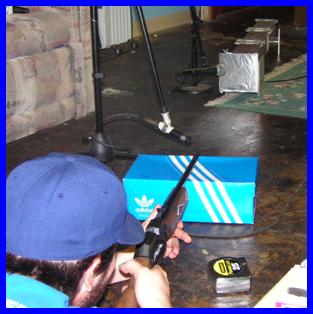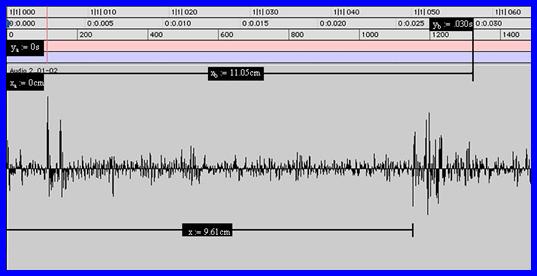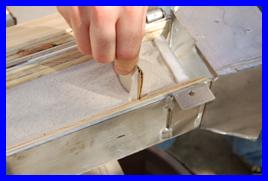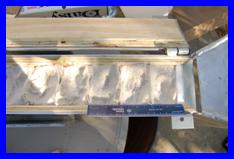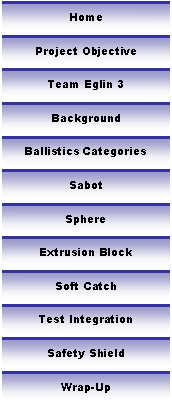
|
Testing of the Soft Catch |
|
Without empirical data there is no way to calculate the depth of penetration for any given medium, so tests were performed and data was collected to assure the soft catch could at the very least, stop the fragments. The test was simply to fire a sphere at a known speed into the soft catch device and track the projectiles penetration depth in different mediums.
Muzzle Velocity Test Setup
The approximate muzzle velocity of the 7mm test specimen is known and the mechanics of shooting a sphere can easily be duplicated with a BB rifle. The only unknown is the muzzle velocity of the BB rifle. To determine this, first the soft catch entrance was covered with aluminum foil. Then the exit of the rifle’s muzzle was placed a known distance away from the foil. Finally a microphone was placed equally between the two and recording software measured the time from when the gun fired until the aluminum foil was hit by the BB With the distance and time known, the velocity of the BB can be easily determined.
Muzzle Velocity Sound Profile
The recording software was only accurate to three thousandth (0.003) of a second. This caused inconsistent data. So the sound wave generated by the software was enlarged and analyzed to interpolate a more precise change in time. To do this, a ruler was used to measure the distance from the spike caused by the muzzle to the spike caused by the foil. The sound wave is printed on a time scale with increments of (0.003s). By measuring the length between increments and the length from spike to spike, the time of travel was determined
The pump action BB rifle was rated to reach approximately 207 m/s for ten pumps. The interpolated time yielded test velocities at and around 190 m/s for ten pumps. These results are pretty consistent with the BB gun’s rating especially for neglecting the time it takes the sound to travel to the microphone and recording software. For testing purposes the average experimental muzzle velocity of the BB gun was determined to be 193 m/s .
Now knowing the speed of the BB, a simple setup using wax paper helped to track the depth of penetration for each trial. First, a piece of cardboard was cut to the size of the channel in the soft catch where the medium lays. The channel was then marked at increments of 2 inches. The cardboard was used to insert strips of wax paper at different increments in the medium. After each trial, the pieces of wax paper were removed one at a time to reveal whether the BB had reached that depth.
Soft Catch Test Setup
If the BB broke the wax paper at 4 inches and not at 6 inches, the depth was recorded as between 4 and 6 inches. To obtain more precise results, wax paper strips were inserted closer together at approximate locations. The next trial produced a depth of in between 5 and 6 inches. The process was repeated to determine penetration depth approximately within a quarter on an inch .
This whole procedure was repeated for sand, perlite, and sphagnum moss, each individually and some in series with each other. The data includes all the penetration depths, densities of each medium, and the medium configurations. Sand alone proved to stop the projectile in a couple of inches but had a large effect on the surface of the sphere. The perlite brought the BB to rest over a greater distance and had fewer effects to the surface of the sphere. After multiple tests, using 38 inches of sphagnum moss with a variable density in series with 8 inches of perlite stopped the BB without causing any damage at a depth of 42 inches . The BB became lodged into a piece of very low density Styrofoam which is used to keep two mediums from mixing or to adjust the depth of a medium.
Optimal Setup for Soft Catch |




|
Copyright 2006-2007 Famu-Fsu College of Engineering . All Rights Reserved |
